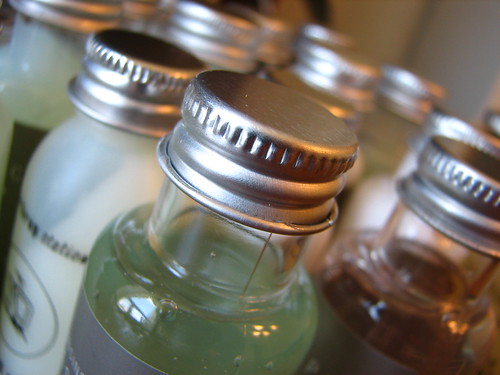2% Nizoral Shampoo Increases Hair Growth More than 2% Minoxidil
In the previous post, I wrote about a study on the effects of ketoconazole on hair growth in men with vertex hair loss. I mentioned that the same paper also describes another experiment comparing the hair growth effects of ketoconazole and minoxidil, which is what we'll look at in this post.
Nizoral vs. minoxidil in hair growth
The second experiment had two groups with four men, age 24-29, in each. All of the men suffered from grade III hair loss of the vertex (the crown of the head). The first group used 2% Nizoral shampoo, while the second group used 2% minoxidil together with a normal shampoo.
There was no significant difference between the groups in hair shaft diameter and sebaceous gland area. Interestingly, however, the authors found a negative linear relationship between hair shaft diameter and the area of the corresponding sebaceous glands. In other words, the larger the glands that secrete sebum in the hair follicles, the thinner the hair.
Similar results, different mechanisms
After 6 months of using the treatments, the hair density of the Nizoral group went from 250 to 296 hairs per square centimeter; an increase of of 18%. In the minoxidil group, the increase was 11%, from 276 to 306 hairs. Both ketoconazole and minoxidil increased hair shaft diameter by 7%. Even though the sample size in this second experiment was very small, this looks like a very promising result.
The mean sebaceous gland area of the Nizoral group decreased by 19.4%. However, in the minoxidil group, the area increased by 5.3%. This means that even though both ketoconazole and minoxidil stimulated hair growth, they did it through different mechanisms. Still, even at the end of the study, the negative relationship between gland area and hair shaft diameter remained.
Conclusion
Ketoconazole, the active ingredient in Nizoral (and some other) shampoos, was more effective than minoxidil in increasing hair count in men with vertex hair loss after 6 months. The increase in hair shaft diameter was the same with both ketoconazole and minoxidil. The two products appear to work through different mechanisms, as ketoconazole decreased sebum production while minoxidil increased it.
For more information on hair growth, see these posts:
2% Nizoral Shampoo Increases Hair Growth in Men with Male Pattern Baldness
Topical Ketoconazole (Nizoral) Increases Hair Growth in Mice
How I Accidentally Grew Hair on My Left Temple with Retinol – Experiment Conclusion
Chinese Hibiscus Leaf Extract Increases Hair Growth in Mice









4 kommenttia:
Do you know the frequency of use with the Nizoral? Packaging says to use it twice a week, and I'm wondering if that's what the study did.
@Anonymous,
According to the full paper, they used it once per day.
- JLL
It is always good to use to minoxidil with a shampoo with ketoconazole. I just recently switched from Nizoral to Regenepure, which is a keto shampoo that was actually made to stop balding and hair regrowth.
Did it work for you.
Post a Comment